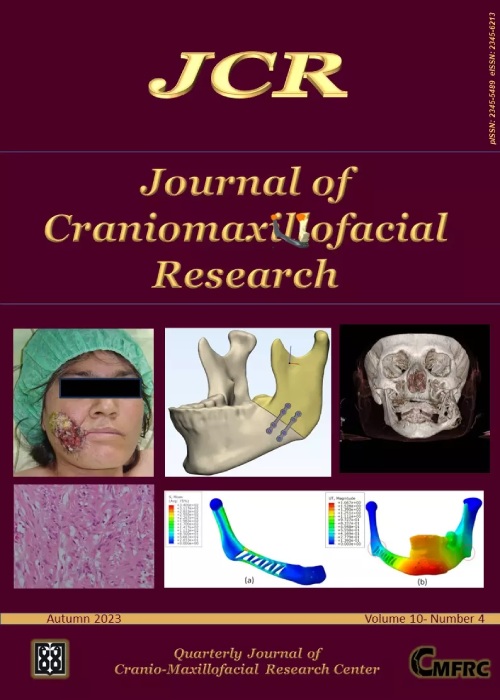Radiographic comparison of the crestal bone loss in the bone-level and tissue-level implants in implant-supported mandibular overdentures
To preserve the peri-implant bone level during implant restorations, multiple variations have been made in the implant-abutment connections and bone level, and tissue level implants have been placed at the bone or tissue levels to restore the function of the lost teeth. This study compared the radiographic amount of crestal bone loss in bone-level and tissue-level implants in the implants supported mandibular overdentures.
This study included 40 patients receiving bone-level and tissue-level implants with mandibular overdentures. A total number of 120 implants were placed by an experienced surgeon in a one-stage surgery. Panoramic images of patients immediately after surgery and at least one year after prosthetic loading were assessed. Bone loss values (distance between implant shoulder to proximal bone) were assessed in the bone-level and tissue-level implants on the radiographs using digital caliper on the surrounding areas of implants, including mesial and distal aspects. The data were subjected to a Student t-test.
The mean of Mesial Bone Loss (MBL) of the right canine was reported 0.74mm. The mean amount of Distal Bone Loss (DBL) of the right canine was 0.78mm, the mean of DBL of the first incisal was 0.75mm. The mean of MBL of the first incisal was 0.77mm, the mean of DBL of the left canine was 0.76mm. The mean of MBL of the left canine was 0.78mm. Distal and mesial bone loss in the canine and first incisor bone-level implants were slightly higher than respective tissue-level implants, but no statistically significant differences were noted in this regard.
According to the results of this study, both bone-level and tissue-level implants can be successfully used for supporting mandibular overdentures. Since the amount of cervical bone loss was clinically acceptable in both groups (in a period of one to four years with an average of 2.1 years). This study recommends that clinicians choose the type of implant according to clinical need and judgement.
- حق عضویت دریافتی صرف حمایت از نشریات عضو و نگهداری، تکمیل و توسعه مگیران میشود.
- پرداخت حق اشتراک و دانلود مقالات اجازه بازنشر آن در سایر رسانههای چاپی و دیجیتال را به کاربر نمیدهد.


